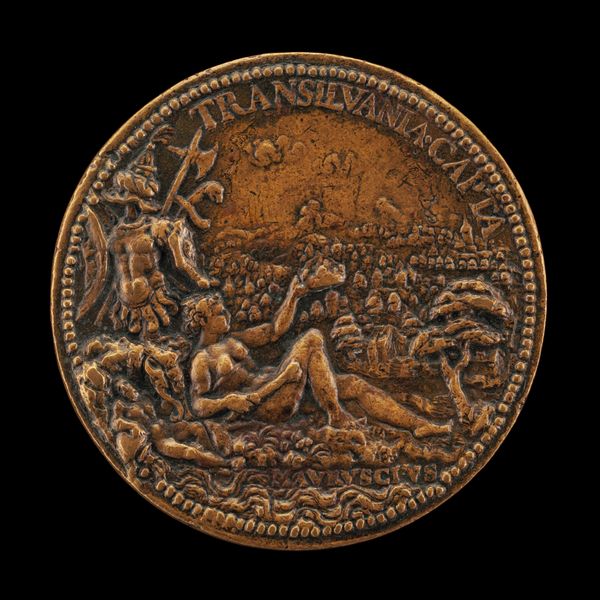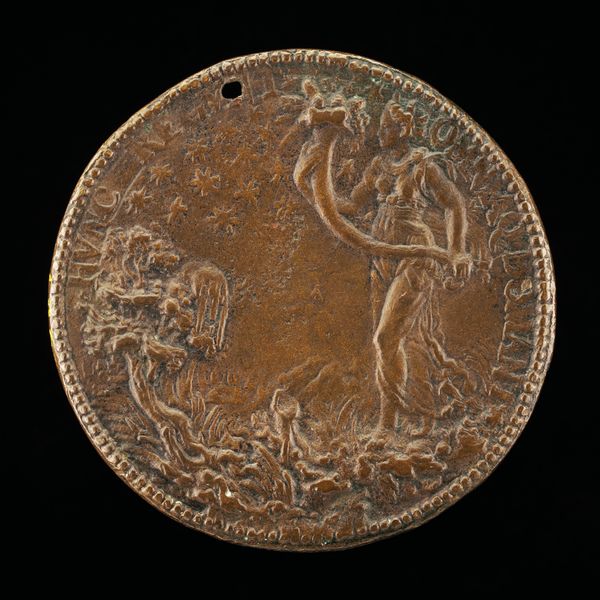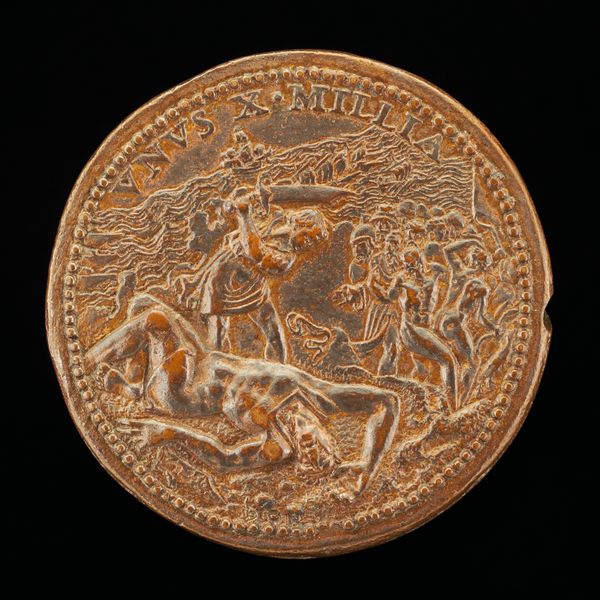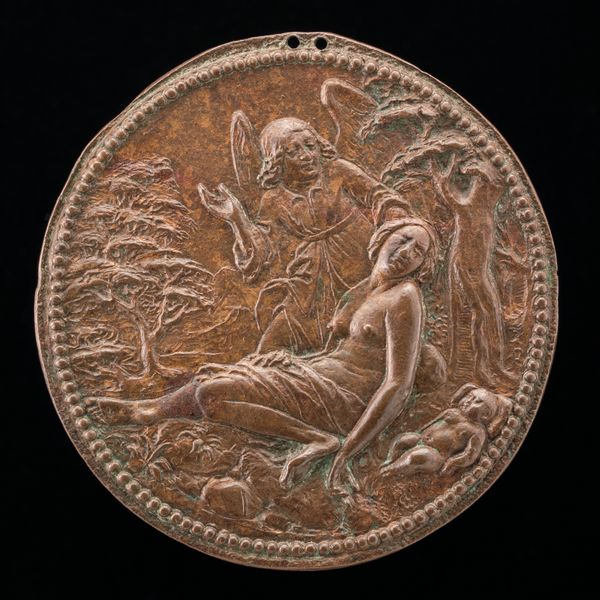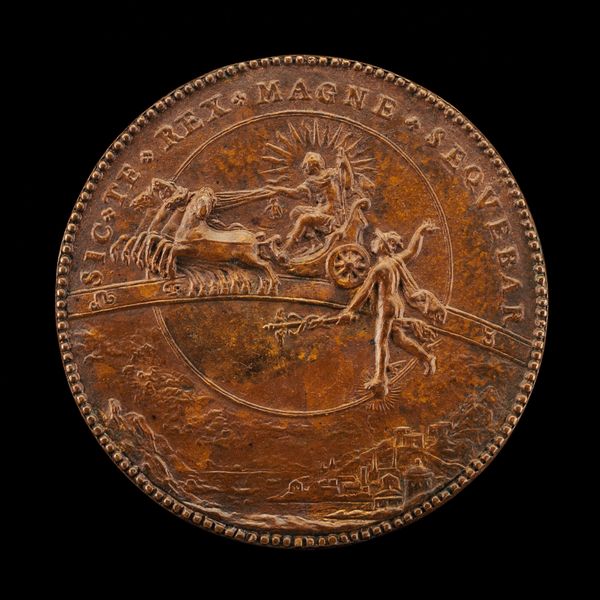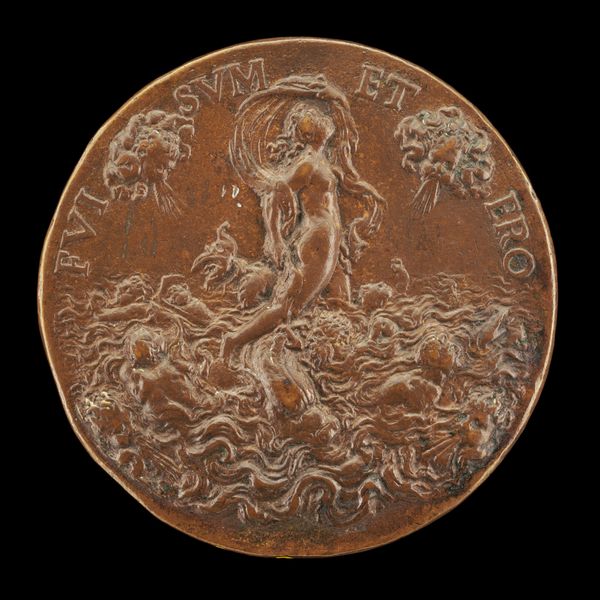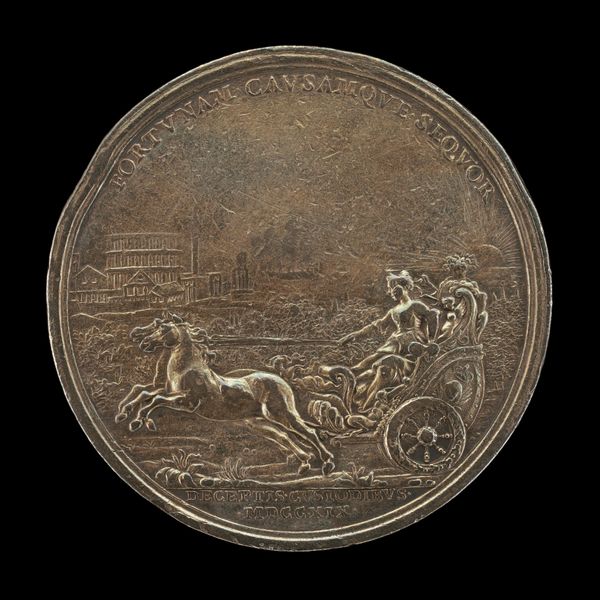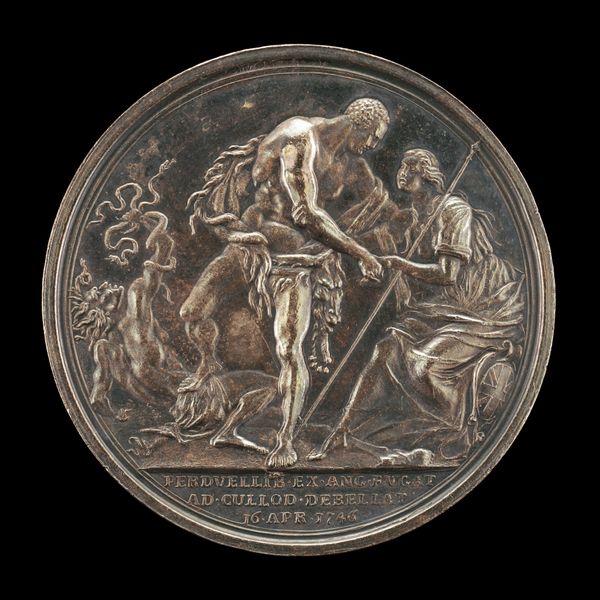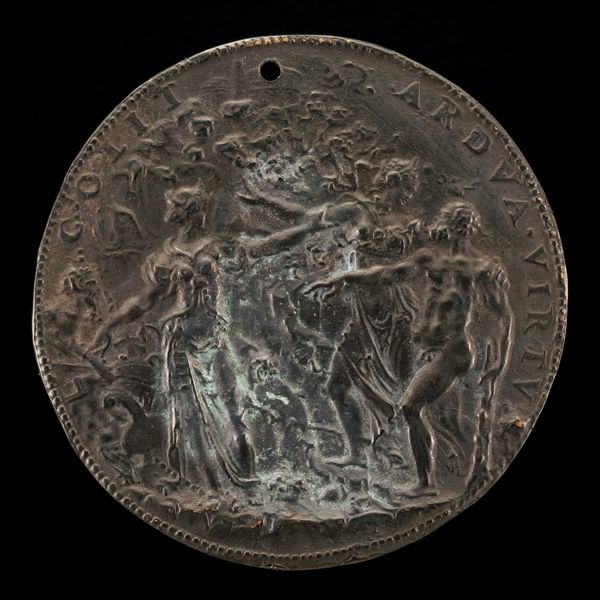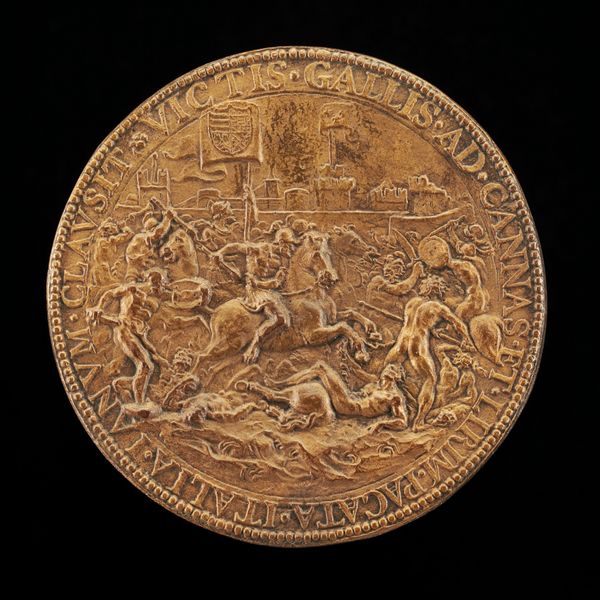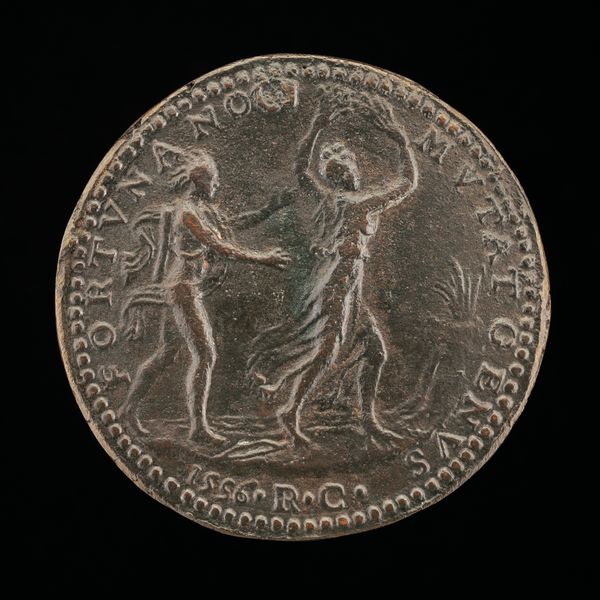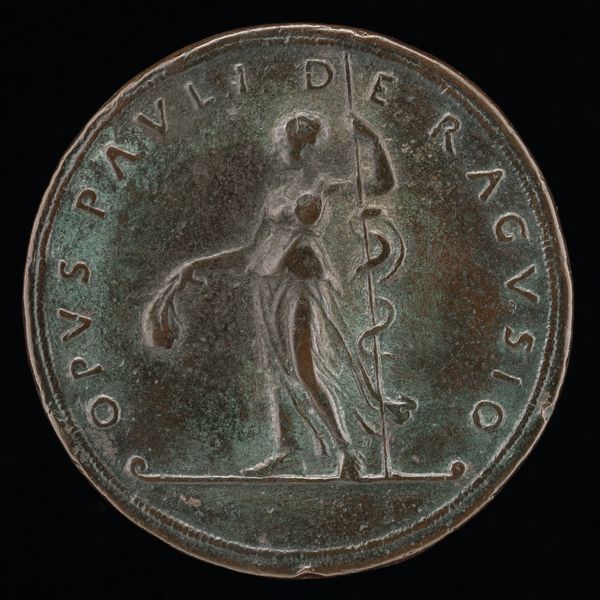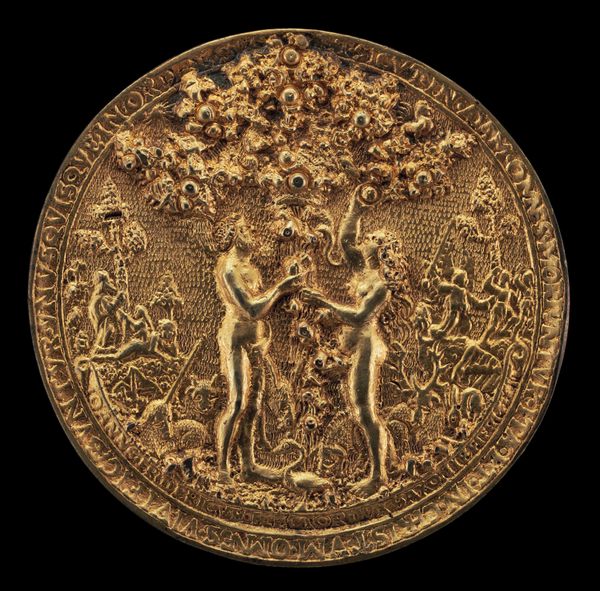![Fernando as Hercules Plucking the Apples of the Hesperides [reverse] by Annibale Fontana](/_next/image?url=https%3A%2F%2Fd2w8kbdekdi1gv.cloudfront.net%2FeyJidWNrZXQiOiAiYXJ0ZXJhLWltYWdlcy1idWNrZXQiLCAia2V5IjogImFydHdvcmtzLzQ3NzJiNmEzLTI4MmMtNGIzMy04NDIyLTFmMDljMTY2MWNkZi80NzcyYjZhMy0yODJjLTRiMzMtODQyMi0xZjA5YzE2NjFjZGZfZnVsbC5qcGciLCAiZWRpdHMiOiB7InJlc2l6ZSI6IHsid2lkdGgiOiAxOTIwLCAiaGVpZ2h0IjogMTkyMCwgImZpdCI6ICJpbnNpZGUifX19&w=3840&q=75)
Fernando as Hercules Plucking the Apples of the Hesperides [reverse] c. 1562
0:00
0:00
sculpture
#
medal
#
natural stone pattern
#
stone
#
sculpture
#
detailed texture
#
sculptural image
#
unrealistic statue
#
carved into stone
#
sculpture
#
carved
#
intricate and detailed
#
statue
Dimensions: overall (diameter): 7.2 cm (2 13/16 in.) gross weight: 125.12 gr (0.276 lb.) axis: 12:00
Copyright: National Gallery of Art: CC0 1.0
Curator: Let's delve into this intriguing piece: "Fernando as Hercules Plucking the Apples of the Hesperides," a medal created around 1562 by Annibale Fontana. The reverse side shows Hercules in action, a fascinating depiction, wouldn't you say? Editor: Absolutely, the scale and meticulous detailing is the first thing that grabs you. To carve such depth and nuance into such a small object speaks to incredible skill and control over the materials. Look at the way he has articulated muscle! Curator: Precisely! Medals like this were not just aesthetic objects. They were commissioned, often by the elite, as political or personal statements. Here, the portrayal of Fernando as Hercules, a figure of immense strength and virtue, suggests aspirations to those very qualities. It’s pure public image management. Editor: The choice of material must have been important. What stone is it carved from, and from where was it quarried? The specific qualities of that material and the availability of stone would contribute so much to how and where this could have been created. Was it local? Imported at great cost? What did it mean for Fernando's status that he used a specific stone? Curator: The inscription “Qvamvis Custodita Dracone" -- guarded though it is by the dragon -- further underscores the message of overcoming obstacles, associating Fernando with heroic perseverance. This was a turbulent time politically; such imagery bolstered the ruler’s perceived power and legitimacy. It speaks directly to the societal role art served. Editor: But beyond political symbolism, the physical process interests me. The labor that went into carving that dragon's scales, for instance, represents hours, likely days, of work by a skilled artisan, or a team of artisans, working to somebody's direct and precise requirements. What tools were used? What was their training like? How does this process shape not just the object but the social context? Curator: Fontana was a master of his time. We can observe a fusion of classical themes with Renaissance sensibilities, reflective of the prevailing intellectual climate of the period, something to reflect the humanist aspirations of that time and project this ideal for Fernando. Editor: It’s a beautiful object, fraught with power and the quiet hum of production, it makes one consider art as a record not just of the elite, but also of the hands that brought the concepts to life, literally carving the power of representation for the elites. Curator: An enduring intersection of artistic skill and power of self-representation. Thank you.
Comments
No comments
Be the first to comment and join the conversation on the ultimate creative platform.
